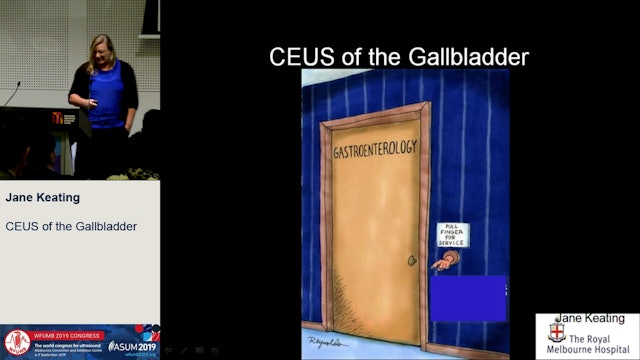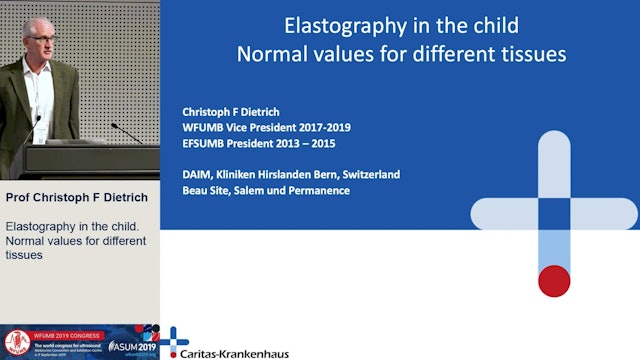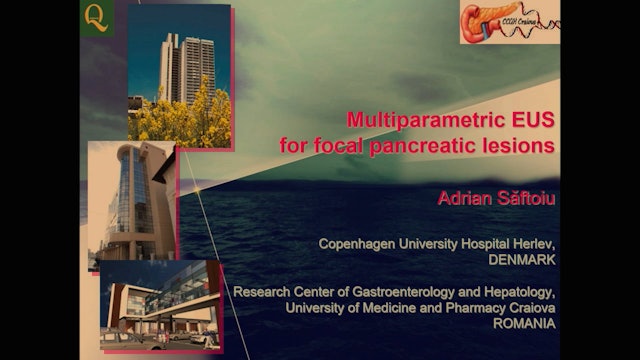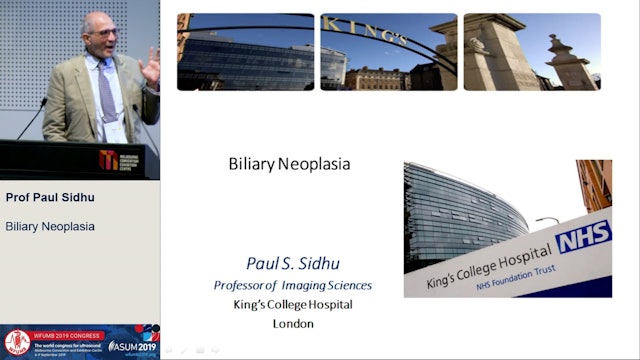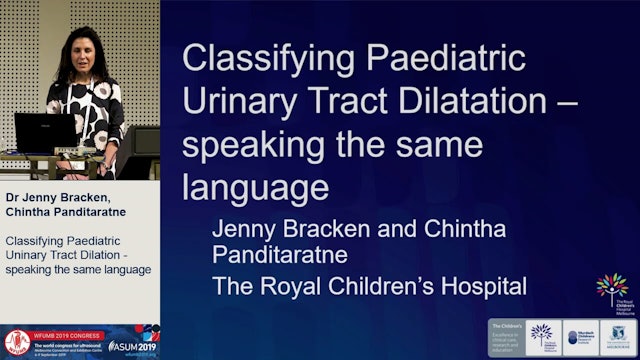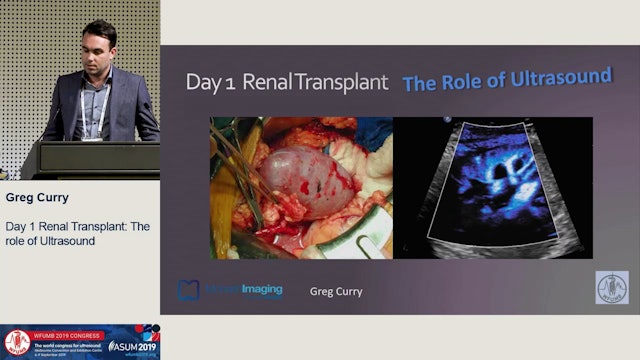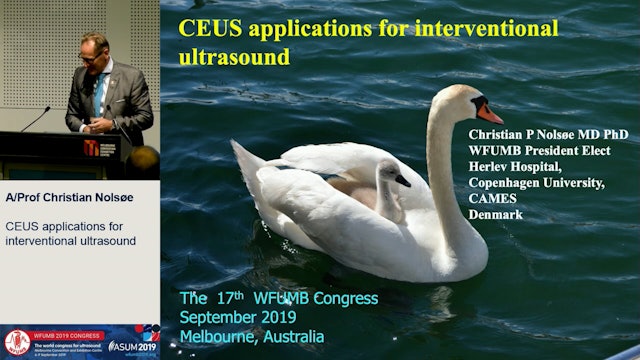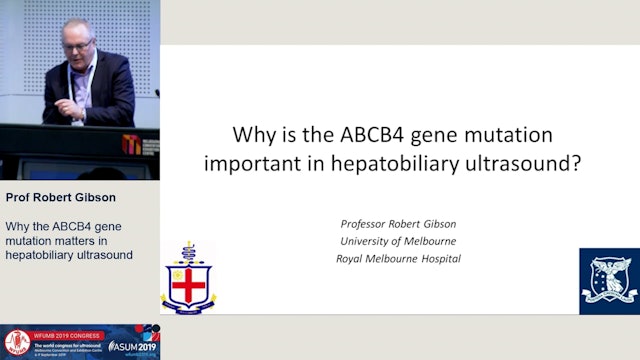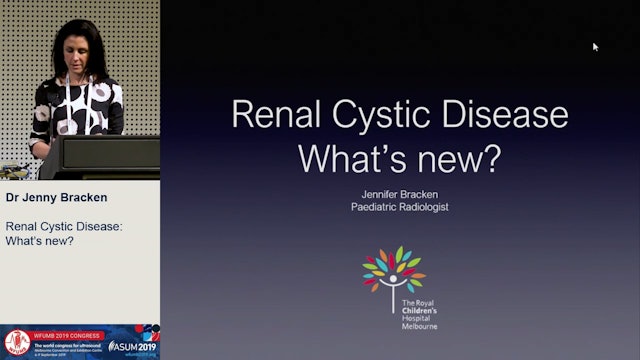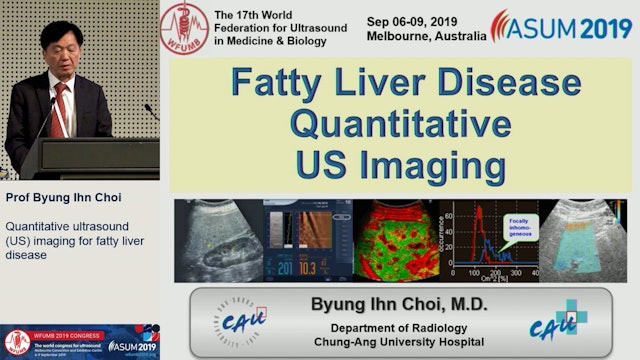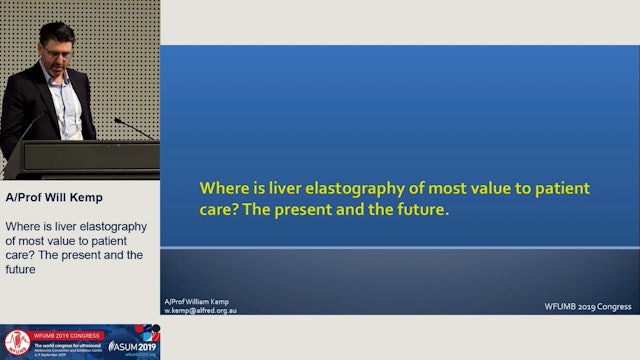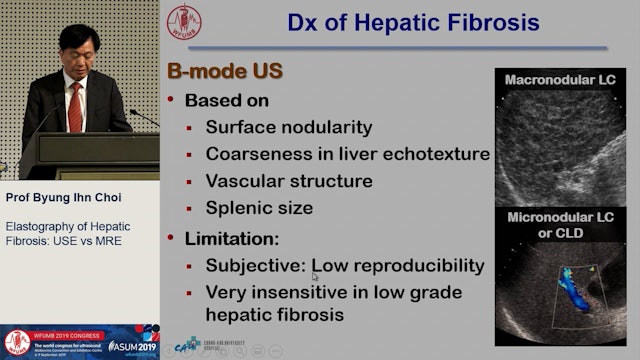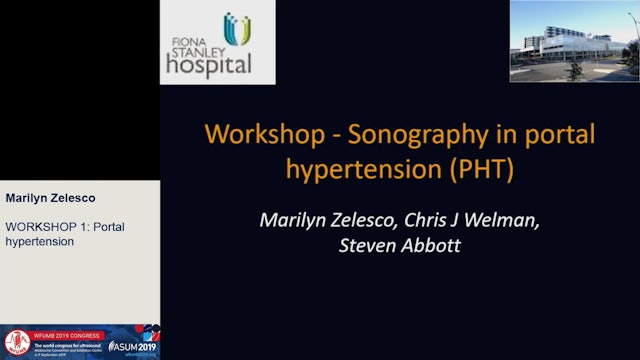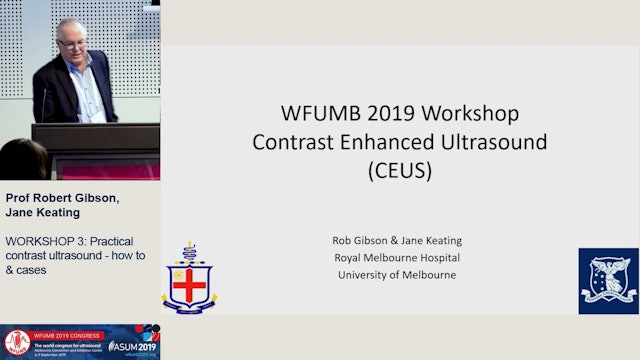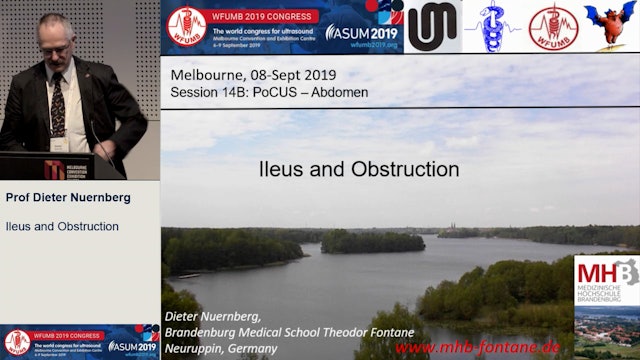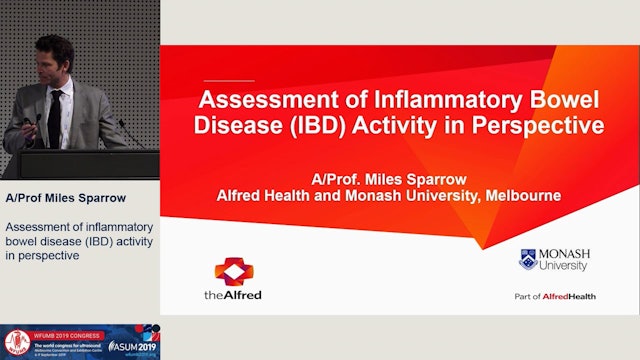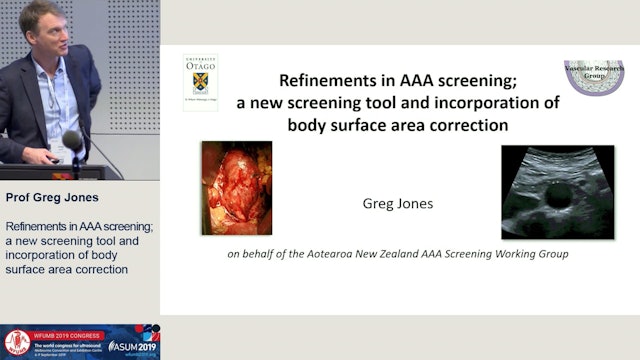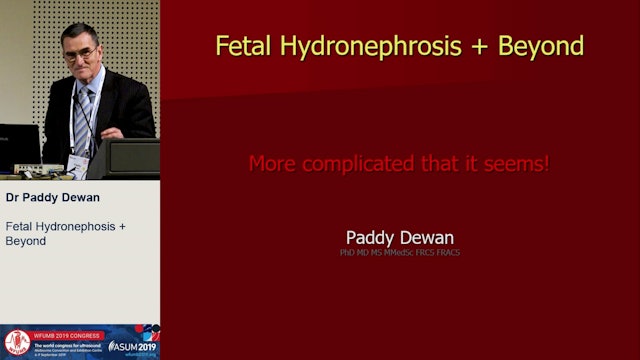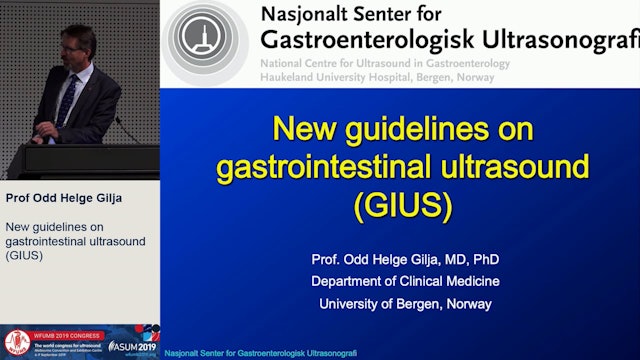ABDOMINAL
-
CEUS of the gallbladder
Background: Ultrasound of the gallbladder is an excellent imaging modality in the assessment of gallbladder disease. Contrast-enhanced ultrasound (CEUS) is well established in the diagnosis of focal liver lesions, but its application is not as well recognised in gallbladder and biliary disease.
... -
Elastography in the child. Normal values for different tissues
Ultrasound elastography is a useful non-invasive tool for the diagnosis of liver fibrosis in adults (1). It plays a similar role in children, with some differences in the confounding factors and in the etiological spectrum of the liver disease; however, guidelines and recommendations have not bee...
-
Liver Shearwave
Learning outcomes:
- Describe the different technologies used to assess liver stiffness
- Describe techniques used to obtain accurate liver elastography results
- Describe some confounders and pitfalls that affect liver elastography results. -
Elastography & contrast-enhanced ultrasound for focal pancreatic lesions
-
Biliary neoplasia
-
Comparison: antenatal renal tract dilatation guidelines vs new UTD guidelines
Comparing antenatal renal tract dilatation guidelines to the new UTD guidelines - What's new? What's different?
-
The day one renal transplant: US diagnosis
-
CEUS applications for interventional ultrasound
The use of CEUS has expanded the field of interventional ultrasound and established new possibilities in patient management and diagnostic capabilities.
CEUS is a powerful diagnostic tool due to excellent time resolution and the possibility to keep a suspected lesion in the scanning plane throug... -
Why the ABCB4 gene mutation matters in hepatobiliary ultrasound
-
Renal cystic disease: What's new?
KUB ultrasound is the bread and butter scan of the paediatric ultrasound department. Accurate and consistent measurements of hydronephrosis are important for treatment and interval surveillance of these patients. At present there is a mismatch between the measurements considered normal in the ant...
-
Quantitative ultrasound (US) imaging for fatty liver disease
Hepatic steatosis, which indicates the accumulation of fat in hepatocytes, is common and has a broad disease spectrum according to its pathogenesis and its severity. Clinically, the occurrence of non-alcoholic fatty liver disease (NAFLD), the most common type of hepatic steatosis, is strongly cor...
-
Where is liver elastography of most value? The present and the future
Not Found
-
Hepatic fibrosis: US elastography vs. MR elastography
Hepatic fibrosis is final results of a wide variety of types of liver injury and is a consequence of all chronic liver diseases and progresses more or less rapidly towards cirrhosis, and finally cancer.
In terms of the tools used to quantitate fibrosis today, there are three kinds of tools; bioc... -
Appendix techniques
Appendicitis remains the most common cause of acute abdomen requiring surgery. The clinical diagnosis could be challenging. Ultrasound (US) and computed tomography (CT) have been widely used as diagnostic tools for appendicitis. Unlike CT, US is usually readily available without ionizing radiatio...
-
Workshop 1: Portal hypertension
Portal hypertension is a common clinical syndrome, characterised by an increase in portal venous pressure. However, direct portal venous pressure is only measured in a minority of patients, and gastroenterologists and interventional radiologists are seeking non-invasive assessment tests of this g...
-
Workshop: Practical contrast ultrasound - how to & cases
Workshop: Practical contrast ultrasound - how to & cases. Introduction to microbubbles and the practical 'how to' requirements to implement CEUS.
-
Workshop: Hepatic shearwave elastography - how to?
Workshop: Hepatic shearwave elastography - how to? This workshop covers tips and tricks to ensure accurate and consistent results when using shearwave elastography to assess the liver.
-
RUQ - not the usual stones
RUQ pain ñ it's not always stones and cholecystitis! Patients presenting with RUQ pain can have all sorts of pathologies. An approach to a biliary tract ultrasound scan will be presented, along with sonographic features of various causes of RUQ pain. Tips will also be given on how to navigate yo...
-
Ileus and obstruction
-
Small infrarenal Aortic size - what does this imply?
While a relationship between large infrarenal aortic diameter and both cardiovascular disease (CVD) prevalence and all-cause mortality has been previously suggested, there is also evidence that small aortic size may also be associated with increased CVD risk. We examined a total of 4882 elderly (...
-
Assessment of inflammatory bowel disease (IBD) activity in perspective
The management of the inflammatory bowel diseases (IBD), Crohn's disease and ulcerative colitis, has been revolutionised in the last decade by the availability of efficacious medical therapies and by the adoption of effective new treatment strategies utilising these agents. The most effective med...
-
Refinements in abdominal aortic aneurysm screening; a new screening tool
Refinements in abdominal aortic aneurysm screening; a new screening tool and incorporation of body surface area correction
-
Fetal and neonatal US - what does the clinician need to know?
The most important consideration in dealing with fetal hydronephrosis is the overall welfare of the mother and the child, then one should consider the outcome for the kidneys and the bladder.
What the Paediatric Urologist needs to know is if and when intervention is needed. While we await resear... -
New guidelines on gastrointestinal ultrasound (GIUS)
here are many guidelines and clinical recommendations released by EFSUMB during the years. An EFSUMB Task Force Group (TFG) with experts from all over Europe has continuously worked since 2014 to generate GIUS guidelines on various topics. The world's first ever guidelines on gastrointestinal ult...

